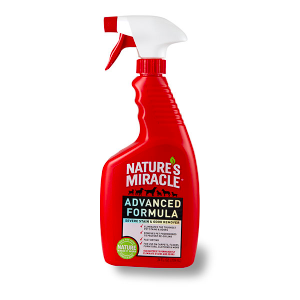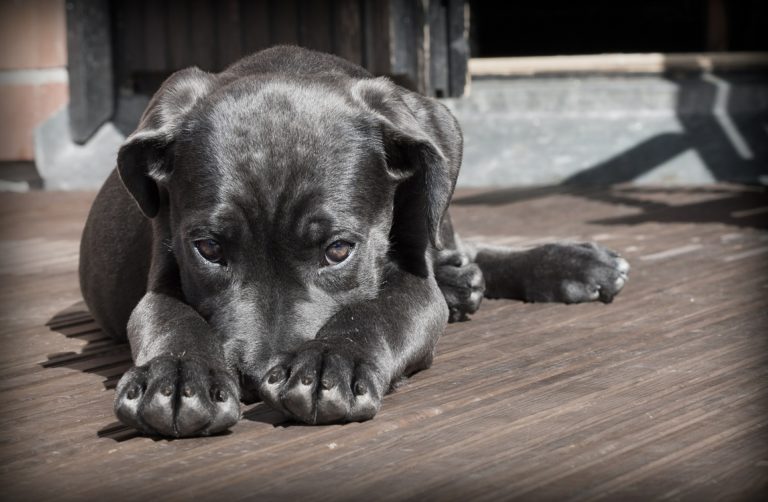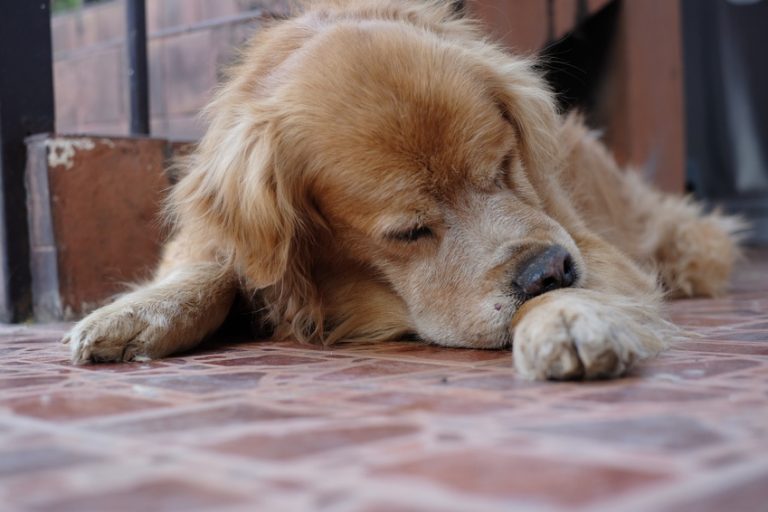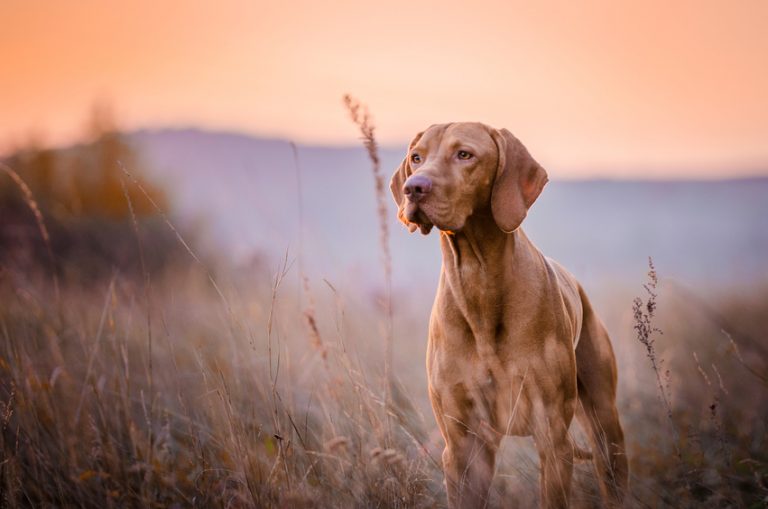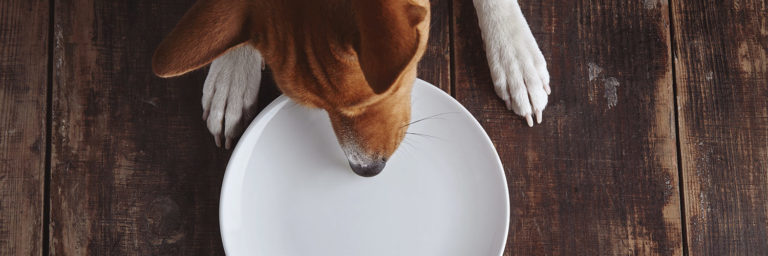New Puppy Checklist
Contents of Article
If you’re a dog lover it’s hard to think of many things more exciting than getting a new puppy. There is so much fun and laughter ahead for the two of you.
Puppies are funny, cute, snuggly, and very loving. You’ll spend the next few months getting to know your new best friend and planning all of the wonderful things you’re going to do together.
But puppies take some preparation, too. You need to be ready when you bring your new puppy home so his homecoming will go smoothly. Here is some advice to help your first couple of days with your new fur pal go better.
New Puppy Tips
- Do puppy proof your house or apartment before you bring your puppy home. This is like child proofing a home. Puppies are every bit as curious as cats, so you can expect your new housemate to have his nose in everything. Hide or tape down electrical cords so your puppy can’t chew on them. Put away household cleaners so he can’t eat or drink something toxic. Put all medications (over-the-counter and prescription) in cabinets so he can’t reach them. Put away shoes, clothes, remotes, and breakable things so your puppy can’t get them. Put away house plants so he won’t eat them or dig in them.
- Do have some of the essentials your puppy will need ready and waiting when you bring him home. Some of the things your puppy will need include food, a collar and leash, a bed, and so on. And toys, of course. Puppies can never have too many toys! We’ll discuss these puppy essentials in more detail in the check list below.
- Do take your puppy to the vet. Make sure your puppy has his puppy shots and his rabies vaccination at the appropriate time. (All 50 states require dogs to have a rabies vaccination.) Whether you get your puppy from a breeder or a shelter, it’s a good idea for a veterinarian to check him out within the first 72 hours after you bring him home.
- Do use bitter apple or a similar product to discourage your puppy from chewing on furniture and woodwork. Puppies love to chew and they often go after furniture, especially wooden furniture.
- Do provide your puppy with plenty of safe chew toys. Puppies chew when they are teething and to explore. This phase can last for months. Giving your puppy lots of safe things to chew on such as toys, Nylabones, Kongs, and dental chews can keep him from chewing on your belongings.
- Do have reasonable expectations about house training. If you consistently take your puppy outside to potty, most puppies will learn to let you know they need to go outside in just a few weeks, but you have to watch for the signals that indicate he needs to go. All puppies have accidents so don’t get angry. It often takes Toy and small breeds longer to be house trained than larger breeds. Males can take longer than females for some reason. It can be harder to house train a puppy if the weather is cold or wet – many puppies don’t like to go outside in this kind of weather. Be sure to praise and reward your puppy when he potties outside.
- Do spend as much time as possible with your puppy at this age. They are only puppies once and they learn fast when they are young. Socialization is especially important with young puppies so get your puppy out of the house and let him meet other friendly people! Sign him up for a puppy pre-school class so he can play with other nice puppies in a supervised setting. The more he builds his confidence while he’s a young puppy, the more well-adjusted and happy he will be as an adult dog. Well-socialized puppies are less likely to have problems with separation anxiety and other behavior problems as adults.
- Do start teaching your puppy some basic obedience. Puppies can start learning basic obedience as early as six weeks. Learning manners and early lessons such as Sit, Come, and Stay is good for every dog and it helps build a bond with you. Keep your lessons short and fun. Puppies learn best if their lessons are like games. Lots of praise and some tasty rewards work great.
- Do work on your puppy’s manners and behavior. The rules you set now will determine how your puppy behaves later. If you let your cute puppy jump up on people now, it will be hard to stop this behavior when he’s bigger, for example. Teach him – gently but firmly – that some behaviors are not welcome.
- Don’t take your puppy to a dog park at this age. Dog parks can be fun but some parks are too rough and tumble for young puppies. If you like dog parks, wait until your puppy is older – and bigger – so he won’t be bullied by other dogs. Then carefully check out the park to make sure it’s a good fit for your particular dog.
These are just some of the basic things you can do to make things go better for you and your puppy during the first few weeks you are together. They should also help him grow up to be a happy adult dog.
Read More about: Puppy Training 101
Here’s a checklist of some of the things your new puppy will need.
New Puppy Supplies
Potty Training Pads
Potty training pads are always high on the list of things you need when you get a new puppy. Whether you intend to train your puppy to potty outside or indoors, there will probably be times when your puppy has to spend time alone in the house before he is potty trained. If you work, for example, you probably have to leave your puppy home during the day. Training pads are useful for anyone who has to leave a puppy or dog at home in case the dog needs to potty while you’re away.
Most potty training pads are essentially the same. They are pads with a plastic liner on the back to keep urine from leaking through. Most pads today contain a chemical that attracts puppies and dogs to them and encourages the dog to pee on them. This discourages your puppy from leaving puddles at random throughout your house or on a carpet or other place in the house where it might be hard to clean up.
The pads range from very simple pads like these Frisco Premium Potty Pads ($24.99, large, 150 pads) to more well-known brands like Simple Solution (quick-drying, super-absorbent, $22.32, 100 pads) and Hartz (odor-eliminating, 100 pads). You can also find potty training pads that are environmentally-friendly such as these from Eco-Care ($21.77, 50 pads). Change the pad after your puppy has used it once. For most training pads, you can simply toss them in the trash.
If you want to use a potty training pad to house train your puppy, place one outside where you want your puppy to relieve himself. Your puppy should be immediately attracted to the spot when you take him outside to potty since it has an odor that he already recognizes.
Poop Bags
If you have taken the next step with your puppy and you are taking him outside to potty, you will need to pick up after him. Nothing makes other dog owners angrier than finding poop left by another dog owner!
Most poop or waste bags are basically plastic bags that come in a convenient rolled and tucked form so you can easily reach them when you are walking your dog. (If you have ever struggled with plastic bags from the grocery store or other plastic bags as poop bags, you know that it’s not always easy to use them for this purpose.) Some poop bags come with handy dispensers. Some are made from recycled plastic. Some are even flushable. They protect you so you won’t get dog poop on your hands and make it easy for you to pick up after your dog.
Choose from something basic like this dispenser with bags from Frisco – $1.79 – or these nice handle-tie bags made from recycled materials from Earth Rated – $5.95. Maybe you would prefer scented bags from Bags on Board – $6.14. Flush Puppies are flushable – $9.99. They all do the same basic job but you may have your own preferences.
Stain Removers
If you have a puppy there’s a good chance that you are going to have stains. Your darling ball of fur is going to emit things that will curl your hair. Not only that, but he will also likely spill things, track dirt in your house, and possibly take up hobbies like paw painting and mud wrestling. You need stain removers if you have a puppy.
Nature’s Miracle is the long-time favorite among dog owners for stain removal. This advanced formula is $9.99 for the 32 ounce bottle but they have an entire line of stain and odor removal products, including laundry products. Simple Solution Extreme Stain + Odor Remover is another stain remover that’s highly recommended. This 32-ounce bottle is $6.99. There are lots of homemade stain remover remedies online and we have tried some of them. Honestly, they don’t come close to products like Nature’s Miracle and Simple Solution when dealing with dog stains.
If you are removing a urine stain, it’s very important to remove it completely, including the odor. Otherwise your puppy will be drawn back to the spot to potty there again.
Crates
Some people don’t like crates because they think of them as “doggy jail.” This is not how your dog sees a crate. For dogs, crates are more like a wolf’s den. They are a safe, secure place. Puppies and dogs often like to have a quiet, snug place where they can get away from noise and people for a little while to nap and chill out. So, try to think of a crate the way your dog sees it.
Crates have lots of purposes from a human perspective. We use them when we travel with dogs to keep dogs safe, such as on airplanes. (Large dogs can’t fly in an airplane cabin.) Most people recommend using a crate when you travel with your dog in your personal vehicle for safety reasons. If you should be in an accident, if your dog is in a crate he may not be hurled around the car and injured. And, if you attend shows or events like obedience, rally, agility, or other competitions, you will need a crate so your dog can hang out and rest in between times when he’s active.
For your puppy and for many dogs at home, a crate is a place where he can rest and relax. You can set it up, place a comfortable mat inside, leave the door open, and let your dog go in and out as he chooses. Crates can also be used to help with house training a puppy.
There are several different kinds of crates such as wire crates, hard plastic airline crates, wicker crates, and mesh crates. Wicker crates are very pretty but puppies can be tempted to chew them. Mesh crates are lightweight and attractive, especially if you use one when you take your dog to places like obedience class, but they are usually best for well-trained dogs. Puppies can become unruly and rip through the mesh sometimes. The best home crates for puppies are usually wire crates or hard plastic crates. They can stand up to puppies. (Note that you may need one crate for use at home and a different crate for traveling with your dog since your dog’s needs are different at different times.)
Crate prices will vary, depending on the size of the crate. Contrary to what you might think, the biggest crate is not always the best one for a puppy or dog. If you are using a crate to help house train your puppy, the crate should be an appropriate size for your puppy but not gigantic. If your puppy has too much room in the crate, he may potty in the crate during the night instead of learning to wait until morning to potty (which is what you are hoping he will learn). At the same time, most people don’t want to buy a puppy-size crate that their puppy will outgrow in a few months. You can buy a crate that will be the right size for your puppy as an adult and use a crate divider to make it smaller while he’s a puppy. Midwest is a popular brand for crates. They make crates and x-pens in lots of sizes such as this Midwest LifeStages Fold & Carry Crate that comes with a divider and crate pan. The 36-inch size (Model # 1636 – 36″L x 24″W x 27″H) is $69.95. This size is for medium-sized puppies/dogs and can be adjusted as your puppy grows.
The nice thing about wire crates is that they are open and let your puppy see out when he’s inside. If you want him to go to sleep, you can always place a sheet over part of the crate to let him know it’s time for bed and give him more privacy.
Hard plastic airline crates allow in less light and there’s less air circulation. You can still use them as a sleeping place for your puppy or dog in the house, however. There are several good brands on the market today. Petmate, Vari Kennel/Doskocil have been around a long time and they have many fans. The Petmate Sky Kennel is airline-approved so, if necessary, your dog could fly as baggage with you on a plane (this is something that people with large dogs know about). If you are using this kind of kennel/crate for a place for your puppy or dog to sleep at home, get a size that is comfortable for him when he’s all grown up. It’s okay if an airline crate is a little larger – airline people like them to be on the big size (even though that is NOT the safest thing for your dog when he’s on a plane). A Petmate Sky Kennel that is 36 L x 25 W x 27 H is $107.99 on Amazon.com. (You will pay MUCH more than this is you have to buy one at the airport – and we speak from experience!) The good thing about these crates is – barring an airplane crash – they last just about forever. They are really tough. This also makes them good for traveling with dogs in your vehicle, as long as they fit securely in your car.
Vari Kennel and Doskocil are made by the same company that makes Petmate. Some of their crates/kennels are sturdier than others. You have probably seen some of their small pet carriers such as this small portable kennel. This little crate is $54.50 for the small size. Many of these carriers are popular with cat owners. This kind of crate/kennel is probably too small to be appealing to a puppy or dog as a sleeping place in the home but it does make a good pet carrier for short trips around town such as a trip to the vet.
Leashes and Collars
You will probably need a collar and leash for your puppy as soon as you bring him home even if he’s not used to walking on a leash yet. There are lots of different kinds of collars. Some are good for training or other purposes. For a puppy who is growing fast, you probably don’t want to spend a lot of money on an expensive leather collar. We recommend a nice nylon collar, preferably a breakaway style collar like one of these from PetSafe. A breakaway collar is designed with a buckle that releases easily if your puppy gets caught on something. This can prevent him from strangling to death. The small collar is $7.49. The matching 6-foot leash from PetSafe is $5.24.
If you have a Toy or small breed puppy you may be better off using a harness. These small puppies can have delicate throats. Pulling against a collar and leash can lead to injuries in some cases. Some brachycephalic breeds (short-nosed) also do better with harnesses.
A soft mesh harness such as this one from Puppia is only $15.53 for the small size and it comes in lots of colors. This x-small harness from Casual Canine is just $9.95. Coastal and East Side are other brands that make nice harnesses for dogs. This Easy Walk harness from PetSafe is functional and attractive. It’s especially good for little dogs that pull and need more control on their walks. The petite size is $18.01.
Collars and harnesses use the same leashes. You can usually find matching leashes for collars and harnesses sold on the same web sites or in the same stores.
When your puppy is older your collar and harness options can expand more. He won’t be growing rapidly and you can invest in more decorative and expensive collars if you like. You can go for collars with bows, rhinestones, and other pretty things. But while your puppy is growing, he may outgrow 2-3 collars in the first year.
When it comes to fitting your puppy for a collar, the most common advice is that you should be able to comfortably fit two fingers between the collar and your puppy’s neck. If the collar is looser than this, he can slide it over his head. Tighter than this, and it’s too tight. The fit of the harness can depend on the breed or mix but, in general, the sizes are based on the width of the dog’s chest. Some harnesses will also have a neck measurement.
Bowls and Feeders
There are several kinds of bowls and feeders for dogs. The most common are made of plastic, ceramic, and stainless steel. We do not recommend plastic bowls for dogs or puppies. They are not durable. They tend to get scratched up. And it’s easy for bacteria to grow inside the scratches and crevices that develop. In addition, some dogs can be allergic to the plastic. Dogs fed from plastic bowls can lose pigment on their noses and have pink noses or “snow nose.” Plastic bowls aren’t the worst thing in the world but, if you have a choice, we recommend using some other kind of bowl for your puppy or dog.
Ceramic bowls or stoneware-type bowls can be a nice choice for feeding your dog as long as they are glazed. These bowls are heavy so puppies and dogs can’t tip them over easily. They don’t crack easily so they don’t harbor bacteria. And they can be dishwasher-safe (check the label). The main drawback with these bowls is that they are breakable and some of them are expensive. Here’s a nice basic stoneware bowl that we like from Ethical Pet. The 9.5 inch diameter bowl is $10.99.
Stainless steel bowls are the best choice for many homes. They are easy to clean, dishwasher safe, and they do not harbor bacteria. They are very sturdy and last forever. Some dogs push them around but you can find stainless steel bowls that are weighted or made so they won’t slide or tip over. They range from the basic metallic look, like this 8-ounce non-skid bowl made by Van Ness for $3.99 to more attractive bowls like this 2-cup bowl from PetRageous Designs for $6.74 and these colorful bowls from Platinum Pets (16-ounce bowl for $7.99).
If you need a feeder for your puppy, you can find a simple feeder like the Petmate Pearl Replendish Feeder With Microban. With this kind of feeder, you simply fill it up and it continuously fills the feed bowl with kibble as your puppy or dog eats, even if you can’t be home. This feeder, holding up to two pounds of kibble, is only $6.65.
If you would like to have a little more control over your puppy’s meals when you can’t be there, the PetSafe Eatwell 5-Meal Timed Pet Feeder has a timer. This feeder stores five one-cup portions. It’s $38.69.
Toys
We’ll start by saying that, to your puppy, your house is one giant toy box. If you are wise, you will hide your personal “stuff” and get him some stuff of his own as fast as possible. Otherwise, he’s going to run around the house with your underwear and chew on your shoes.
Seriously, puppies do need lots and lots of toys. Playing helps their mental development, encourages them to exercise, and it’s just plain fun. Ideally, you should provide your puppy with a variety of toys: chew toys, tug toys, balls, ropes, plush toys, things that make weird noises – the list goes on. You can start with some basic things like this Nylabone Puppy Chew Starter Kit. It contains three bones in different flavors for $4.89. Nylabones last a long time so your puppy will get lots of chewing from these bones.
A Kong puppy toy is another good choice for many puppies, especially if you stuff them with treats. The Kong toy is $6.29 and the treats for it are $3.17 but you can also use other treats that your puppy likes.
We also like the Multipet Chilly Bone. This is a great chew toy when your puppy is teething. You can wet this toy and freeze it so your puppy has something cool and soothing to chew on when his gums are hurting. Reusable. Great idea! The small size is only $4.99.
Puppies also love wild and crazy toys like the ones that Tuffy’s makes. Check out this octopus from Tuffy’s Ocean Creatures. Machine washable, floats in the water, with eight squeakers. Great for one puppy or he can share the toy with you or other dogs. $10.78.
Most toys are fine for puppies to play with but we do encourage you to supervise your puppy when he’s playing. Even seemingly harmless toys can sometimes cause an unexpected problem. Don’t give your puppy toys that he could potentially swallow, for example. Make sure toys are too big to fit down his throat.
Fleas and Ticks
If you live in the most northern parts of the United States you may not have to deal with fleas and ticks. For the rest of us, however, they are a part of life. Fortunately there are lots of good options for coping with these pests today.
Flea and tick preventives should not be used on very young puppies. Most of these products state that puppies must be 6-8 weeks old before you can use them, so be sure to check the labels and warnings before purchasing them if you have a very young puppy.
These products come in collars, topical applications (squeeze-tubes), shampoos, and oral tablets. The topical applications or “spot-on” treatments are probably the most popular products today. These flea and tick products include Frontline Plus, K9Advantix II, Advantage II, Sentry FibroGuard, Bio Spot, and PetArmor. PetArmor Plus Flea & Tick Squeeze-On Treatment for Dogs & Puppies (small size) is $19.28 for a package of three applications. K9 Advantix II Flea & Tick Treatment for Dogs 11-20 lbs (4 treatments) is $44.99.
Seresto makes an 8-month flea and tick collar for small dogs and puppies (up to 18 pounds). It’s 44.68.
Both Sentry and Capstar make oral pills for flea control. Oral flea control has the advantage of killing the fleas on the puppy or dog quickly. The drawback is that it doesn’t do anything to prevent fleas from coming back and the effects are short-term. Sentry Capguard (6 treatments) is $21.30. Capstar is $24.99.
Flea and tick shampoo has been around a long time and it’s still a good choice for some dogs. TropiClean Maximum Strength Natural Flea & Tick Dog Shampoo contains lemon grass, cinnamon and cedarwood oils to kill fleas naturally. It also contains cocoa to soothe the skin. The 20-ounce bottle is $8.99. Flea shampoos get rid of the fleas on your puppy or dog and discourage new fleas from returning for a short time.
Beds
There are several options when it comes to where your new puppy will sleep. Should you or shouldn’t you let your puppy sleep in your bed? This is really a matter of preference. Some people like to let a puppy or dog sleep in their bed and some people don’t. If you have a spouse, this can be a source of disagreement. If the puppy is really your children’s dog, some parents don’t like the idea of a dog sleeping with young kids.
Whatever you decide about your puppy’s sleeping arrangements, he will probably need a bed of his own to use at least some of the time. You can find many comfortable, cozy dog beds for modest prices. Styles such as the Aspen Pet Self Warming Pet Bed (19-inch diameter) are very popular. This model is $14.06 and it comes in larger sizes and other colors. In general, bigger beds cost more, so if you have an extra large dog you can count on paying a lot more for a dog bed. Beds with more features also cost more. So, if you buy a heated bed or one with memory foam, such as this PetFusion Ultimate Lounge with Solid Memory Foam for Dogs & Cats, with bolsters and water-resistant, anti-tear outer covering, you can expect to pay $179.95 for the x-large size. Your puppy probably doesn’t need all of these features, to be honest. Memory foam and heated beds are usually intended for older dogs with arthritis or other joint problems. But you can find some very elaborate dog beds if you are interested.
If your puppy spends much time outside or on an enclosed porch, he might enjoy a raised bed. These beds allow the air to circulate underneath the bed and keep the dog cool while he relaxes. The Coolaroo Steel-Framed Elevated Pet Bed (medium) is $21.27.
Grooming Products
Naturally your puppy will need to be groomed. Grooming will vary, depending on your puppy’s breed or mix, but all puppies need to have some of the same basic care. Some of the things you’ll need include nail trimmers and dental care products for your puppy.
Ear Cleaning
TropiClean Alcohol Free Ear Wash for Dogs has no alcohol so it doesn’t sting when you put a few drops in your puppy’s ear. This 4-ounce bottle is $6.99.
Nail Trimming
Many people are squeamish about trimming their puppy’s nails. If you are nervous about doing it, you can ask your veterinarian to cut them or take your puppy to a pet groomer. If you want to trim them yourself, you can use a good nail grinder such as this one from Oster. You are much less likely to hurt your dog’s nails with a nail grinder and they are very easy to use. You just have to spend a little time helping your dog get used to the grinder at first because they do make a little noise. Most people (and dogs) like them a lot better than nail clippers. This Oster Nail Grinder Kit is professional grade and includes everything you need. It’s $48.99.
Teeth Brushing
At one time people would have thought you were crazy if you talked about brushing your puppy’s teeth but there are lots of dental products for dogs today. There’s even a doggy dental month. It is important to take care of your puppy’s teeth and continue when he becomes an adult. There are several different ways to care for his dental hygiene. You can brush his teeth; use a dental rinse in his mouth; or add a dental product to his drinking water, for example.
If you would like to brush your puppy’s teeth, you can use a nice starter kit like Vetoquinol Vet Solutions Enzadent Enzymatic Poultry-Flavored Toothbrush Kit for Dogs & Cats. It comes with a toothbrush, flavored toothpaste, and a finger brush (some people prefer to use the finger brush to reach the back teeth). The kit is $10.21. Most dogs like to have their teeth brushed, especially with flavored toothpaste – they think it’s a treat. Reminder: Do NOT use human toothpaste for your dog. Human toothpastes often contain xylitol, an artificial sweetener that is toxic to dogs.
If your puppy doesn’t like brushing, you can use a product like Vetoquinol Dentahex Oral Hygiene Rinse for Dogs & Cats. It reduces plaque and helps fight tooth and gum disease in dogs. It also freshens your dog’s breath. The 8-ounce bottle is $10.61.
There are also additives for your dog’s water to help keep his teeth clean, reduce plaque and tartar, and keep his breath fresh such as Sentry Petrodex Veterinary Strength Dog & Cat Dental Water Additive. This 16-ounce bottle is $5.99.
Brushing
Your puppy will also need to be brushed regularly. For most dogs you can use a nice bristle brush such as this Safari brush for $7.49. If you have a dog with a short, smooth coat, like a hound, you might want to use a slicker brush or a hound glove to remove dead hair. This Frank’s Universal slicker is $7.99 but slickers are easy to find online and in pet stores. If you have a dog with a long, flowing coat, you will most likely need a good pin brush. This Chris Christensen pin brush is $22.00. The long pins lift and separate the hair so it won’t tear or break off. If you have a terrier (depending on the breed and type of coat), you can use a terrier palm pad such as this Ancol Ergo Palm Brush for $9.99. In general, the more hair your dog has, the more often he needs to be groomed, so if you have an Afghan Hound, you can count on spending many hours brushing that beautiful coat. However, it usually takes a while before puppies begin to resemble their adult selves. It takes a long time for hair to grow. If your puppy is supposed to have long hair or curly hair or dreadlocks when he grows up, just take care of it regularly while he’s young and eventually it will turn out the way it’s supposed to look.
Bathing
Your puppy will also need an occasional bath – though not as often as some people might think. Unless you are showing your dog or someone in your home is dealing with pet allergies, it’s usually enough to bathe your puppy when he gets dirty. You can use gentle puppy shampoos for this purpose. Bio-Groom has been making excellent shampoos and conditioners for many years. We like Bio-Groom Fluffy Puppy Shampoo (and many of their other products). The 12-ounce bottle is $8.49. It’s soap-free, rinses out thoroughly, and doesn’t leave an irritating residue on your puppy. If your puppy has any skin problems or special coat needs, Bio-Groom has lots of other shampoos that might be suitable. Isle of Dogs Tearless Puppy Shampoo is another favorite. It’s sulfate-free and paraben-free. It’s good for a puppy’s sensitive skin and it has Isle of Dogs’ signature scent – Cotton+Fresh Orchid. The 16-ounce bottle is $7.99.
Be sure to dry your puppy thoroughly after a bath, taking care to dry his ears and get any moisture out. You can use a blow dryer to dry your puppy if you like. Use a warm, gentle setting – not too hot. After a bath, don’t be surprised if your puppy zooms around the house. Baths have a way of shaking dogs up!
We hope this puppy checklist helps you as you plan the things your puppy will need when you bring him home. The items mentioned here are only meant to be examples and suggestions. There are lots of great products for puppies online and in pet stores. We suggest that you browse them to see what would best suit you and your puppy. Good luck!

